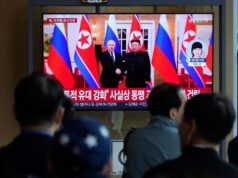Army has made a considered decision To Induct The ARJUN MK1A Tanks, Will Prove Beneficial In The Long Run

The Ministry of Defence (MoD) in procuring 118 indigenously developed Mk-1A Arjun main battle tanks (MBTs) for Rs 8,350 crore, only after the Army made a considered decision and gave a final clearance. It appears a very good and timely move, considering the operational and logistical requirements in the 12 Corps Zone.
More than 50 years back the heavy Centurion Tanks were phased out hastily as junk. They were bought by the Israelis as scrap via South Africa. These helped save Israel on the Golan Heights during the Arab Israeli war which followed.
MoD is now finalising a contract with the Ordnance Factory Board (OFB) for its Heavy Vehicles Factory (HVF) at Avadi, to build 118 upgraded Mk-1A variants of Arjun. First five MBTs would be delivered to the army 30 months later, followed by 30 MK-1As each year, till the remaining 83 platforms are handed over to complete two armoured regiments by 2025-26.
Thus 12 Corps of Southern Command will have 4x Regiments of these heavy tanks in the desert zone protecting the Jaiselmer Barmer axis from any Pakistani misadventure.Similarly it will be prudent to permanently deploy 2x Regiments of these vastly superior tanks in Bhuj Sector too to prevent any ingress by the Pakistani armour.Another 2x Regiments will be required at the Corps level.
Though certain military analysts are still against the Arjuns because it is heavy. They say that deploying this home made 68.25 tonne Mk-1A MBT – amongst the world’s heaviest – would remain limited largely to Rajasthan’s desert region.
So what’s Wrong with that ? Unlike 1965 or even 1971, we do not have so much paucity of resources that we need to keep switching our assets ( limited in those days ) from one extreme sector to the other. In fact the region Bhuj, Barmer, Jaiselmer, Jodhpur earlier sparsely developed, has now developed so much, that we cannot afford to let the enemy penetrate and seize territory anywhere. 12 Corps needs to be given its third division and more armour.
The analysts still keep harping that the MBT’s bulk and weight excluded positioning it in Punjab or adjoining areas, as its cross-country mobility was restricted by the sizeable nominal ground pressure (NGP) it exerts.
This is a grossly wrong analysis. The Mk-1A variant has been fitted with wider tracks, with an NPG of 0.85kg/cm sq so as to evenly distribute its weight,
The NGP pertains to pressure exerted on the ground by the MBT during movement, and remains an operational measure of its relative employability in various regions.
However nowadays we have enough of T72s and T90s to defend these areas
where presently Arjun may have some difficulties. In case we manufacture and deploy Arjuns in enough numbers, then when time comes to replace the T90s, we will have our lighter Arjun Mk2 tanks to do the needful.
One of the main argument of the naysayers is that the majority of bridges across Punjab were built to withstand loads averaging 50 tonnes, some 18 and 12 tonnes less than what the Mk-1As and MK1s weigh. Thus it still remains a problem with regard to easily traversing the area. Here people are overlooking the fact that with the concept of Integrated Battle Groups getting in place, these IBGs will be deployed as forward as possible. Hence there may be very few understrength bridges in such areas but they can easily be upgraded starting now.
A 2017 parliamentary standing committee on defence too had advised the government to strengthen and upgrade culverts and bridges in strategic thrust areas in ‘developed and semi-developed terrains’ – regions like Punjab – to facilitate Arjun’s deployment beyond ‘presently envisaged desert terrains’. It directed the administration to consult with the army to realise this. Time has come to turn this advice into an ORDER.
Looking carefully in the South Western Command and Western Command theatre, at the minimum, we do find places for at least 4x Regiments of Arjun Tanks with the IBGs.
The Mk-1A MBT will not only give the Indian Army a lot of operational confidence but also flexibility after the completion of the much needed re-enforcing roads and bridges across Punjab and other places like Ganganagar on the Pakistan border. Arjuns deployed with the IBGs will actually send a clear message to Pakistan to stop misbehaving and irritating India henceforth. One punch from a heavyweight boxer is enough to decide the outcome of a boxing bout.
Even in 14 Corps Zone we can certainly have 2x Regiments of Arjuns for defence of Chusul and adjoining areas.Problems due to high altitude temperature and paucity of oxygen can be easily taken care of by our DRDO. Also how to take them there ? Well Major Sparrow did it in 1948 at Zozi La, 3 Infantry Division did it in 1962 at Chusul, it was done again in 1987 and subsequently thereafter. So in 2021 onwards, this should be not a problem. They very sight of ARJUN will send shivers down the spines of the PLA soldiers manning their T 15 tanks.
Some one has also Come out With a yet another WIDE BALL that the two existing Arjun regiments – 43 and 75 Regiments with Mk1 MBTs have been stationed near Jaisalmer for almost a decade and are unlikely to be rotated soon, creating manpower management issues. They fail to highlight the management issues. There are scores of Units in the Indian Army, stationed permanently at one place. Rather if this is such a serious problem then have few more of these at Nasirabad etc and there will be no more rotational problems. Also with more numbers, EME workshops too will be in a position to stock spares and related systems to sustain the Arjun fleet.
The heavier Arjun MBTs has enhanced protection, like the 64-tonne British Challenger-2s or the 63-tonne US Abrams tanks, and also has enough mobility and speed like the lighter Russian T-series platforms, for battlefield survival. Indian Army’s 67 armoured regiments today includes some 1900-odd 44 tonne licence-built T-72M1s and some 1,500 directly imported and locally constructed T-90S MBTs weighing 48 tonnes.
The Arjun MBT’s size and weight may cause transportation problems if they are located in depth with the Strike Corps, limiting it to either being moved via ‘dedicated’ broad gauge tracks, loaded aboard limited rolling stock developed at great cost, or alternately, on special road transporters. However forward deployment in the IBG concept takes care of these problems.
Even for deployment from the depth areas, the MoD has already invited responses from indigenous and global manufacturers to its request for information (RFI) to supply the army 36 x general service high mobility load carriers to transport Arjun. The RFI responses are presently under evaluation. This will be a small price to pay for having our own indigenously designed tanks.
The price of each upgraded Arjun Mk-1A – at the officially projected rate of 118 MBTs for Rs 8,350 crore – May Look astronomical but that is not so. It covers the developmental costs too. With more numbers, the price will come down. Also whatever money is spent, it will remain within the country, give opportunity to local vendors. On the other hand when we import, the money goes out of the Country without benefiting the local industry. So ultimately even in comparison to the T90S MBTs cost of around Rs 20 Crores each and the T72M1 even less at Rs 12 Crores per tank, Arjun will still be better.
Next, despite the CAG report of few years back saying that some 69% of Arjun’s components, things are not that bad today. Indigenization may have been an empty and meaningless word a decade back but now ATMANIRVARTA has started playing its role. Just like Tejas fighter, one by one all the imported systems and components like the MTU diesel engine and semi-automatic transmission system and gun control equipment, all from Germany, the gunner’s main sight is from Belgium’s will be indigenized when required in numbers. Even other foreign and licence-built components like tracks – manufactured locally by L&T, its Israeli fire control system (FCS), day sight and thermal imager (TI) – Israeli frequency, hopping radios,and other equipment, all will become Indian.By now the imported component has already fallen to a little over 50%. In next few years it should be below 15%.
The Mk-1A features 72 improvements, including 14 major ones, over the Mk1 model, that include advanced thermal imaging sights for night fighting, improved navigation systems, a digital control harness and a mine plough. The variant is also fitted with a new panoramic sight for the tank commander, a more powerful auxiliary power unit (8.5KW capacity) and an enhanced communication system for real time data-transmission.
The MK-1A’s hull and turret have been modified to provide the MBT a lower silhouette to make detection more difficult, its ammunition has been containerised and its 120mm gun upgraded to fire thermobaric and armour-piercing incendiary ammunition and high-explosive and squash-head (HESH) rounds. The MBT has also been fitted with ERA panels for enhanced protection, Which had increased its weight over the Mk1 model.
The MBT’s re-designed nitrogen-based hydro-pneumatic suspension system and larger wheels help support its additional weight, while its driver has been provided with an un-cooled night-vision camera to enable travel at a reasonable speed in total darkness. The MBT, Will also, be soon armed with a gun-launched guided missile system that the army had demanded, as part of the improvements over the Mk1 version, and to provide it battlefield advantage over the enemy.
The Mk-1A order also incorporates a two-year engineering support package that includes maintenance, spares including engines and instructing crews in simulators to operate the platforms.
The army not satisfied with the DRDO benchmarks did Change and insist on new qualitative requirements (QRs), making it difficult for it to categorically freeze its design parameters and work towards improvements and indigenisation. Over a decade later, the army’s doggedness has paid off, by forcing the DRDO to achieve the higher goals. Now the government’s atmanirbharta drive has ensured that DRDO, CVRDE and Avadi factory all deliver India’s long list of pending materiel needs for operational efficiency.
So instead of ceasing the Arjun manufacturing line once the forthcoming order of 118 xMk1 A platforms is completed, fresh Orders for 1180 x MK1 A must be placed to equip additional 10x Regiments. Thereafter ARJUN MK2 should be replacing the balance of the T72s and still later the T90s.




